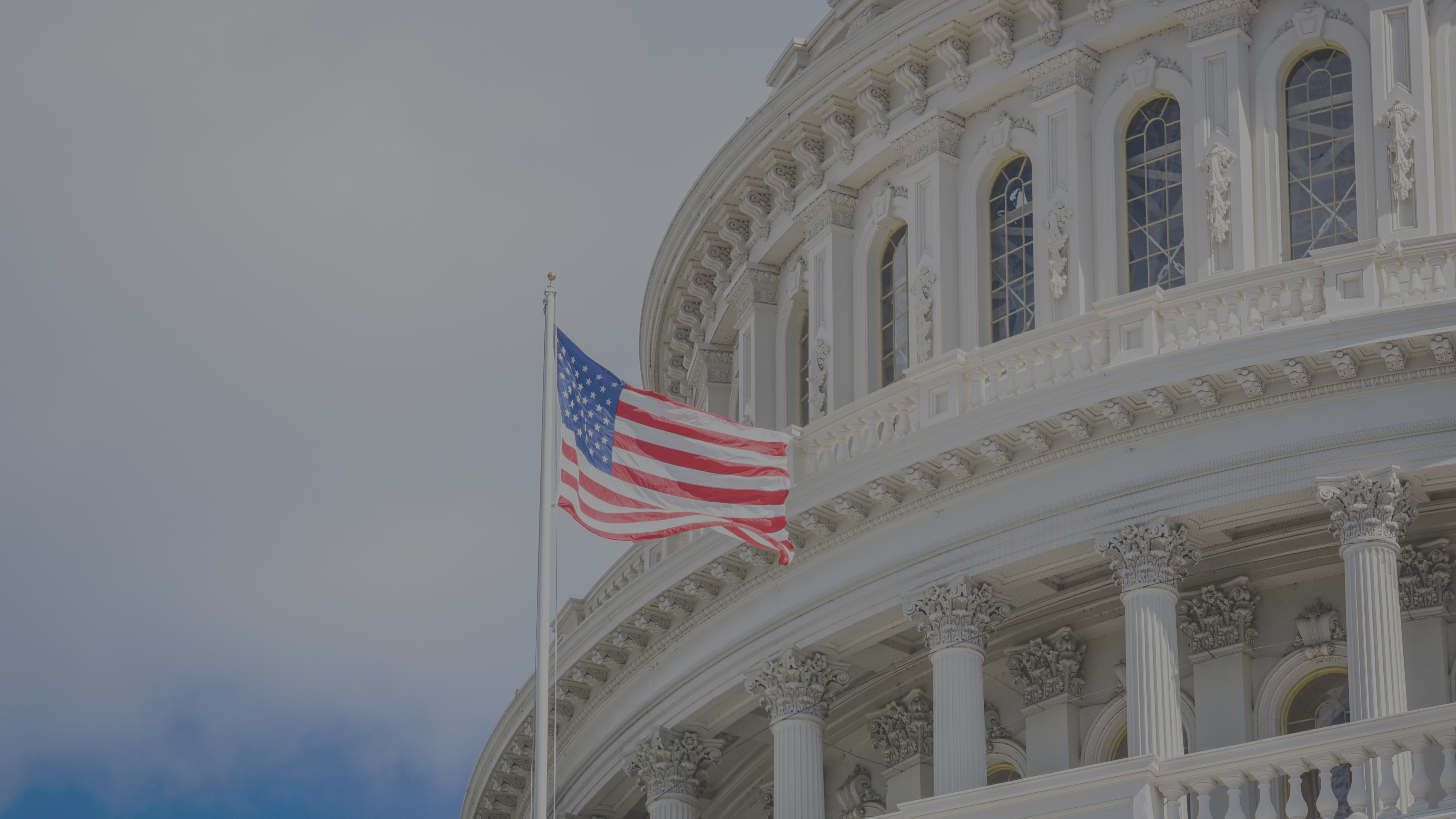After winning by the slimmest of margins in both the Senate and House of Representatives, the One Big Beautiful Bill Act was signed into law by President Trump on July 4th. The highly controversial budget reconciliation bill lowers taxes, increases funding for border security, and reduces spending on social safety net programs.
According to the Congressional Budget Office, the bill is estimated to increase the federal deficit by $3.4 trillion over the next decade. Still, it includes significant cuts to government spending, including reductions to nutrition assistance programs like SNAP, as well as to Medicaid, which provides healthcare to low-income individuals and families through a joint federal and state effort. Reductions to these programs could have far-reaching implications, impacting consumer spending and the broader economy.
Some of the major legislative changes that may impact the dairy industry include reductions to SNAP funding, updates to farm safety net programs, increased support for dairy-focused initiatives, and reforms to business and estate tax policies.
SNAP
The Supplemental Nutrition Assistance Program, commonly known as SNAP or food stamps, provides funding for low-income households to purchase food, with dairy being a major category of those purchases. According to the USDA, approximately 42 million people participated in the SNAP program in 2023.
A key aspect of the budget bill included substantial reductions to SNAP funding, which are the largest cuts since the food stamp program began in 1939, impacting millions of people who currently receive benefits. SNAP cuts are estimated differently by various news sources; for example, the New York Times lists cuts adding to $195 billion, while ABC News reports $230 billion. Either way, the program has been slashed significantly to the tune of about $200 billion over the next ten years.
One of the most significant changes to SNAP involves revised work requirements. The age threshold for mandatory work participation[1] has been raised from 54 to 64 years old, and parents with children over the age of 13 will now also be subject to these requirements. In contrast, previously, parents with dependents were generally exempt from this requirement. The Congressional Budget Office estimated that these changes would cut more than two million individuals from the program.
Moreover, beginning in 2028, the changes could shift some of the financial responsibility for SNAP to the states. The legislation will require states with error rates above 6% to cover a portion of program costs. Based on 2024 error rates, 37 states could be affected, though there is still time to address improper payments before the policy takes effect. Even then, the ten states with the highest error rates (13.34% or higher) will not face funding reductions until 2029.
The dairy industry plays a significant role in addressing nutritional needs through various nutrition assistance programs. Although the latest government data on SNAP expenditures is from a study completed in 2011, the USDA Food and Nutrition Service reported fluid milk as the second-highest individual product expenditure, while cheese ranked fifth. With dairy likely still accounting for a significant portion of SNAP expenditures, changes to federal nutrition assistance will impact overall dairy demand.
Dairy Programs
The last Farm Bill expired in 2023, and since then, Congress has relied on extensions to keep its programs running. While a full reauthorization remains on hold, the recent budget bill included several key Farm Bill provisions that directly impact the dairy industry.
The Dairy Margin Coverage Program
First, the budget bill included updates to the Dairy Margin Coverage (DMC) program. DMC is a dairy farm safety net program administered by the USDA’s Farm Service Agency that pays out when the difference between milk and feed prices rises above a certain elected level.
The new legislation extends the program through 2031, allows producers to update their production history to their highest annual volume of 2021, 2022, or 2023, and offers a 25% discount on premiums for producers who commit to a five-year enrollment during the 2026 sign-up period. Importantly, the bill increases the annual limit on Tier I DMC coverage to six million pounds starting next year. Long criticized for its five-million-pound annual production cap, this change will enable more milk to benefit from the program’s protections, though it continues to provide the greatest benefit to smaller farms.
Cost-of-Manufacturing Studies
The budget bill included $9 million in funding for the USDA to conduct mandatory cost-of-manufacturing studies every two years. In the 2023-2024 Federal Milk Marketing Order (FMMO) hearings, both producer and processor organizations agreed that make allowances in the FMMO pricing formulas need to be updated in a more timely fashion. Championed by these groups, the surveys will help to provide more accurate data when updating make allowances in the future, ensuring FMMOs reflect current market realities and processors are compensated fairly. Once the USDA implements this program, expect to see increased attention surrounding future FMMO rulemaking proceedings.
Other Dairy Funding
The budget bill also included several other dairy-related funding provisions focused on the industry’s resilience and sustainability. These include long-term funding for conservation programs, new investments in trade promotion, and increased support for animal health initiatives aimed at preventing and responding to livestock diseases, such as Highly Pathogenic Avian Influenza (HPAI). Further, the clean fuel production tax credit was extended through 2031 and requires the Treasury Department to set distinct emission rates for specific feedstocks, including dairy manure, supporting its use in renewable energy.
Removed: Suspension of the ‘Dairy Cliff’
The legislation did NOT, however, include the suspension of the ‘dairy cliff’, as was passed in the bill’s first version by the House.
One of the main reasons Congress must eventually pass a new Farm Bill is to avoid triggering the permanent price support program, commonly known as the ‘dairy cliff’. The ‘dairy cliff’ refers to an outdated pricing mechanism that would revert milk prices to 1940s-era support levels if the Farm Bill lapses.
The House’s original version of the budget bill included a suspension of the dairy cliff through 2031, which could have delayed the urgency of a new Farm Bill. However, that provision was cut from the Senate’s version, reinstating the pressure to act. Without further action, either a new Farm Bill or an additional extension will be needed before the current resolution expires at the end of September 2025.
Business and Estate Taxes
The budget bill includes a range of business and estate tax provisions designed to provide long-term tax relief.
The legislation makes 2017 tax rates and brackets permanent starting next year, which is considered a major win for one of President Trump’s key policy priorities. It also increases the estate and gift tax exemption to $15 million, marking an important change for farm families planning to pass assets to the next generation, and makes Section 199A permanent, allowing eligible businesses to deduct up to 20% of their qualified business income from taxable income.
Together, these provisions represent significant tax savings and enhanced estate planning flexibility for agricultural producers and small business owners.
Final Thoughts
The One Big Beautiful Bill Act brings a mix of opportunity and uncertainty for the dairy industry. On the positive side, updates to the DMC program, increased funding for conservation, trade, and animal health initiatives, along with long-awaited business and estate tax reforms, offer meaningful support for dairy producers and rural communities. However, these benefits are tempered by concerns over weakened consumer demand, driven by significant cuts to nutrition assistance programs and broader impacts on wealth inequality, the overall economy, and household spending. As the full effects of the legislation unfold, it will be important to monitor how these provisions shape both on-farm economics and consumer behavior moving forward.
[1] ‘Mandatory work participation’ refers to the rule that able-bodied adults between 18 and 64 years of age must work, volunteer, study, or train for at least 80 hours per month to qualify for SNAP benefits, with exemptions for parents of children under 14.


